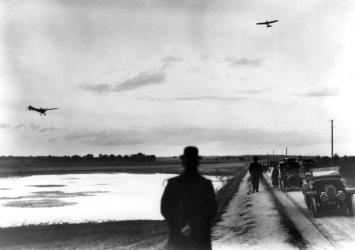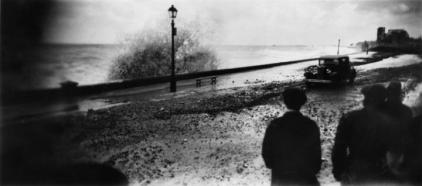
Sala au rocher de la vierge, Biarritz [1927]
If you have an eye for stunning pictures and also enjoy taking photos yourself, you start to encounter some of the work of the greatest photographers ever. You start following pages on social media, you catch yourself googling certain photographers’ work and biography for hours. Through the process you might find photos that just leave you speechless. The picture that keeps on giving each time you look at it.
So I’ve started collecting these photos, right next to my own rolls’ folders and thought I’d share them with you. This series (the abbreviation stands for ‘Photos Worth Seeing‘) does not intend to provide a comprehensive summary of given photographer’s biography or work; on the contrary, it highlights one particular image, hence giving a tiny (yet telling) glimpse of the artist’s vision.
Without further ado, our first name in the series: Jacques-Henri Lartigue.
Despite a great majority of his most known photographs focus on humans in motion with the surroundings relatively still, this photo here is the complete opposite. First, notice how – on a very basic level of looking at the image – his subject, the man is positioned in the center. Which, again, is contrary to how he positions most of his subjects in landscape mode. Putting the man in the middle here, furthermore, having his back towards us would normally diminish his role. This is when the background comes into play. Contrasting a motionless man in the fore-center, the wave breaking on the cliff and splashing away in the air brings the whole image into life. Fascinatingly enough, the splash’s diagonal, center to top left corner direction is in almost perfect symmetry with the man’s shadow cast towards the bottom right. The pier’s concrete wall the man is leaning against links the stillness of the fore with the motion of the back and with a hook it returns on the left of the image, now as a more fragile-looking railing.
What makes this image even more perfect is that as we place it under further scrutiny, it’s easy to spot that horizon is slightly tilted, strengthening the imbalance created by the violent splash that rules the image. Was this on purpose? Probably not. I found two similar pictures, but the characteristics do not resemble the one I picked here. Here:

the guy in the hat is in the center, photographed from the back, but with the only unpredictable motion being that of the planes, Lartigue must have had enough time to watch for a careful composition. On the other image:

we have the splashing wave once more as the “moving” element of the image. But this time Lartigue’s vantage point is much higher, and with that he possibly had the chance to predict where and in what shape would the wave appear, thus the composition looks a little more “established” unlike the one I chose to discuss.
Is this overanalyzing? Could be. My guess is that Lartigue had a relatively still subject that could have easily moved in any second; albeit having sharp sunlight the clouds suggest the lights changed quickly; and let’s not forget the raging sea around, providing unexpected circumstances for both the subject and the camera (salty water and all). With all that said, Lartigue had little time to take the photo: the subject is carefully positioned, the wave is expected to break, but the horizon is not horizontal as it should be.
If you want more Lartigue, browse here or here; his unlikely road to fame should be read here; and if you want more about his (probably) most famous picture, this forum is for you. Tune in for the next episode of PWS with Alfred Eisenstaedt coming up!
Great idea for a series. I love the early photographers. They did so much with such a difference in technology than we have now.
LikeLike
It never ceases to amaze me. Even with today’s technology it still feels that the ‘old school’ photographers were able to do something modern photographers will never be able to achieve.
LikeLike
Pingback: Alfred Eisenstaedt [PWS] | Analog anecdotes
Pingback: Robert Capa [PWS] | Analog anecdotes
Pingback: Ansel Adams [PWS] | Analog anecdotes